Blog
Increase Effectiveness of POSM - (POS)

Point-of-sale or POS marketing refers to the display and promotional items placed in and around the checkout area. The idea being to influence customers and increasing sales. This marketing strategy not only catches customer’s attention when they are poised to make a purchase, but also keeps them engaged and happy as they look around, wait in line thus improving their overall experience. When done effectively, POS marketing can help boost your business’s upselling and cross-selling potential and reinforce your brand.
Here are some POS marketing tips to drive sales:
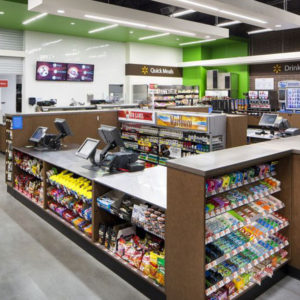
1. Utilize check out area for displays – Use shelves or free-standing displays around your checkout areas to showcase small, inexpensive products. Placing displays around your cash till will keep your customers engaged as they wait in line, and will promote impulse buys.
For example at grocery stores placing Chewing gums, Chocolate’s and small inexpensive items around the checkout. Customers constantly would add a chocolate to their initial purchases—products they may have forgotten or never considered at time of Purchase.
2. Create a Sampling Area – Another way that you can boost customer engagement and drive sales around your POS is by creating a sampling or demo station. Whether you are sampling a new snack or showing shoppers how to use a featured product, a sampling area is a great way to introduce customers to new products and boost your sales.
Set up your sampling in an area closest to the checkout counter, but be sure that it doesn’t get overcrowded or disrupt the queue. This will allow you to capitalize on customers about to make a purchase, drive impulse buys, and keep order in your checkout area.
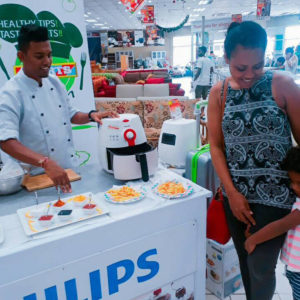
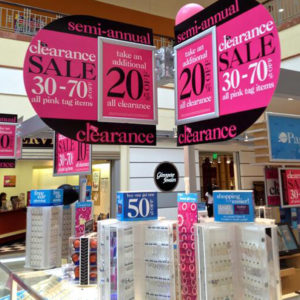
3. Use Compelling Call to Action Verbiage – Use call to action signage around the products at your POS to make shoppers more likely to buy. For example, “try me” or “buy now” verbiage call customers to take some kind of action, and CTA verbiage has been shown to increase sales by over 1,000% for retailers.
Keep your CTA simple and straight to the point, but also bold and attention-grabbing. The message should be short and sweet, starting with a strong verb like “buy” or “try” to incite action. Then use other words like “yours,” “now,” and “discount” to make your CTA compelling and eye-catching. In terms of design, use bold fonts and colors to make sure your signage stands out, and position it at eye level to ensure maximum visibility.
4. Add Countertop Displays (CTU) – Another place that you can capitalize on impulse buys is on your cash till. Create small displays like counter tops, which showcase items that customers can easily add to their purchase or small products that they may have forgotten to shop for.
The countertop POS marketing strategy is especially useful if you don’t have a lot of space around your Cash till for shelving displays. Displaying products on your counter is a great way to utilize product space without taking up additional square footage.
Another way that you can enhance your countertop displays is with guiding signage. Spark inspiration among your customers with signs telling them how to use your product or what it is best suited for. If customers are able to envision how they would use your products, they will feel even more pressurized to make an impulse purchase.
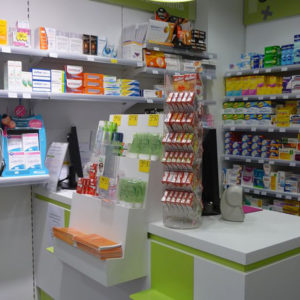
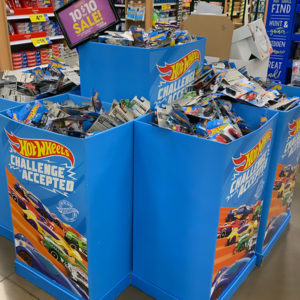
5. Set Up “Dump Bins” – Dump bins are floor-standing open containers that hold loose products, like detergents, razors, and house supplies. Dump bins typically hold products that are categorically the same and are on sale or discount.
6. Cross Merchandise Complementary Products – When customers are in the checkout line or are preparing to pay, use POS marketing to cross merchandise complementary products. Cross merchandising saves customers time, makes their shopping experience easier and more convenient, reminds them of need, sparks ideas, and drives your sales.
Market these products around your POS, and don’t forget about guiding signage—these can be especially helpful to elucidate your product pairings and clarify how customers can use them in their personal lives.
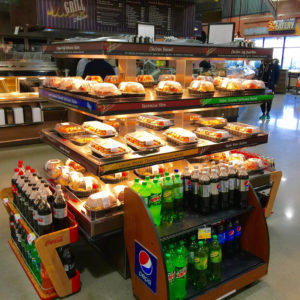
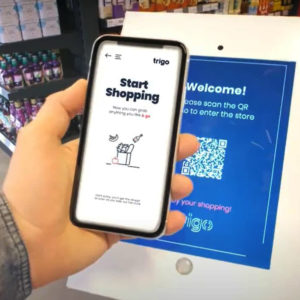
7. Display a QR Code at Checkout – The checkout line is a great place to use QR codes to engage customers with your brand and keep people shopping as they wait in line. With a QR code shoppers can use their phones to scan to your website, see your social media pages, take a survey, and even scan items and make payments.
Customers who are in line to check out have already connected with your brand, so if you offer them more engagement, they are more likely to want to partake. Place your QR codes around your register to boost engagement, promote online sales, and create an exciting and easy customer experience.
8. Have Customer Service Available at Checkout – Be sure that your customers can get assistance at or near your POS. This placement of your customer service area is not only logical to most shoppers, but it will help to ensure that customers are able to make their purchases with a positive experience

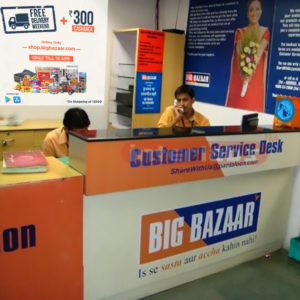
9. Attract Shoppers With Free Shipping / delivery – You can set yourself ahead and make people more likely to purchase if you offer free shipping. The biggest consideration you will have to make is how much your business can spend on shipping costs. Typically, small businesses are not able to offer free shipping as a standard policy. There are, however, several ways you can offer free shipping without sacrificing your bottom line.
- Minimum Purchase: You can offer free shipping once a customer reaches a certain ticket amount.
- Factor shipping cost into price: One way you can offer free shipping on all orders is by bumping up your prices slightly to account for shipping costs.
- Limited Time: You can offer limited-time shipping promotions to incentivize shopping during slow seasons or to stay competitive during peak times.
- Coupons: You can offer to exchange email or texting information in exchange for free shipping codes.
- Membership: You can make free shipping available to customers who have a membership or pay a flat annual shipping fee.
One of the best places to advertise your shipping deals / delivery is around your POS. Flash your shipping offers around the shopping cart icon, when customers add things to their cart, when they are in their carts, and again when they are inputting their information. This will ensure that customers know your offerings and benefits when they are making their purchasing decision.
10. Suggest Complementary Products – Another way that you can boost your sales with POS marketing is through product suggestions. For example, if a customer has a pair of denim shorts in their cart, you might suggest matching tops and shoes that could make the item into a complete outfit. Product suggestions are a great upselling strategy that make shopping easier for customers.
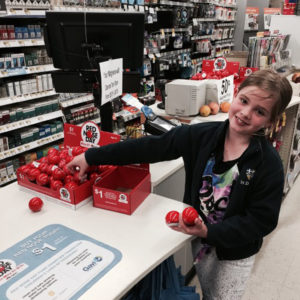
11. Campaign for a Cause – Another way that you can craft your customers’ experience and enhance your POS marketing is by making community partnerships and advertising them on the POS page. This will let customers know what your business stands for and how they can become involved.
Community partnerships not only define your brand in the eyes of your shoppers, but also help to drive sales and attract new customers.
12. Advertise Your Loyalty Program – When customers are checking out, they have already connected with your brand and are ripe for becoming a loyal customer. This makes it the perfect time to let them know about your rewards, VIP, or loyalty programs. Advertise your loyalty program in your POS area to get customers when they are most engaged with your brand and help turn them into loyal shoppers.
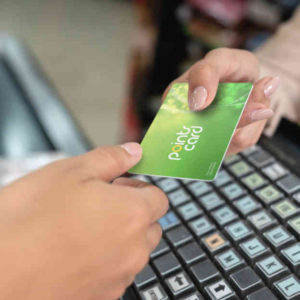
Conclusion
POS marketing is a great way to boost your revenue, craft your brand, and drive impulse buys right before purchase. Both in-store and online, POS marketing is vital to the success of your business and keeping your customers happy. Use the tips above to create an effective POS marketing campaign and watch your business grow.
Terms used:
Impulse buys: An unplanned purchase. When a customer buys items they were not planning on buying, or when something is bought “on a whim.”
Impulse buys can be a great way to drive sales, and eight out of 10 impulse buys are made in brick-and-mortar stores. When stocking your shelves with impulse items use products like snacks, small accessories, or other little items that customers can add to their purchase without much thought. Or, another strategy is to display odds and ends that customers might have forgotten—like batteries, lighters, or nail clippers.
Cross merchandising: The practice of displaying items from different product categories together to incentivize customers to make multiple item purchases.
For example, a grocery store might place pasta and pasta sauce at an endcap near the register so customers can easily add both products to their cart at the end of their shopping trip. Or, a boutique might display scarves and hats near its POS so customers can grab all their cold-weather essentials in one place. Placing items that are commonly sold together near your POS is a great strategy for upselling.
Upselling: A sales strategy in which you encourage customers to purchase additional suggested products or services that are directly related to the original item of interest.
To get started, identify items that complement each other and make sense to sell together. Of those products, choose the ones that can easily fit at your POS and are small and relatively inexpensive. Remember, even with cross merchandising at your POS, the products you choose should fall into the “impulse” category, remaining small and easy for customers to add to their purchases.
Call to Action (CTA): A marketing term for any display that is designed to prompt an immediate response or a sale.
Keep your CTA simple and straight to the point, but also bold and attention-grabbing. The message should be short and sweet, starting with a strong verb like “buy” or “try” to incite action. Then use other words like “yours,” “now,” and “discount” to make your CTA compelling and eye-catching. In terms of design, use bold fonts and colors to make sure your signage stands out, and position it at eye level to ensure maximum visibility.
Author: Mr. Husein Mohsinally Mohamedbhoy, Business Head @ SIGNTECH PRINT N DISPLAY SYSTEMS LLP has over 20 years of experience in the development, manufacture and deployment of speciality POSM in India. He can be reached at husein@signtech.in
About Us
Get In Touch
- Unit No. 4, Building 1, Extension 1, Rajprabha Udyog Nagar, Golani Naka, Valiv Vasai East, Dist. Palghar - 401 208

